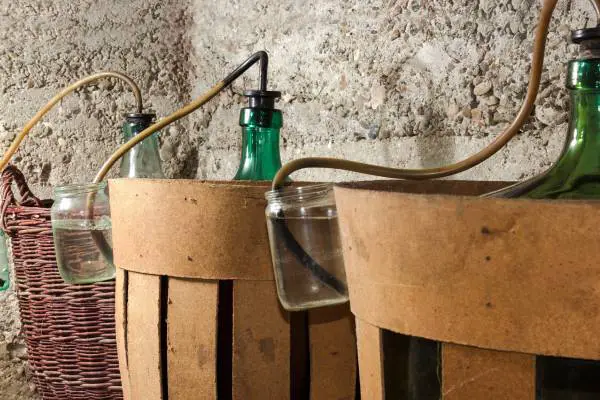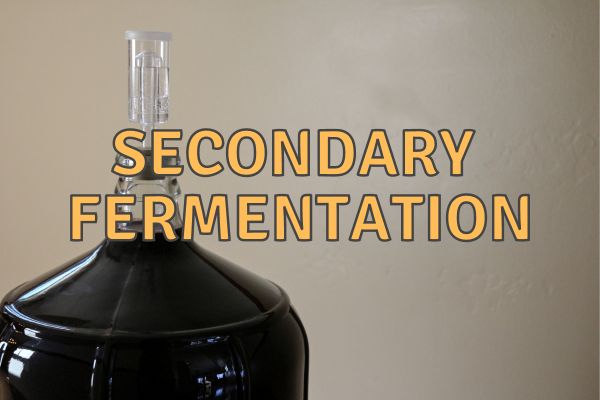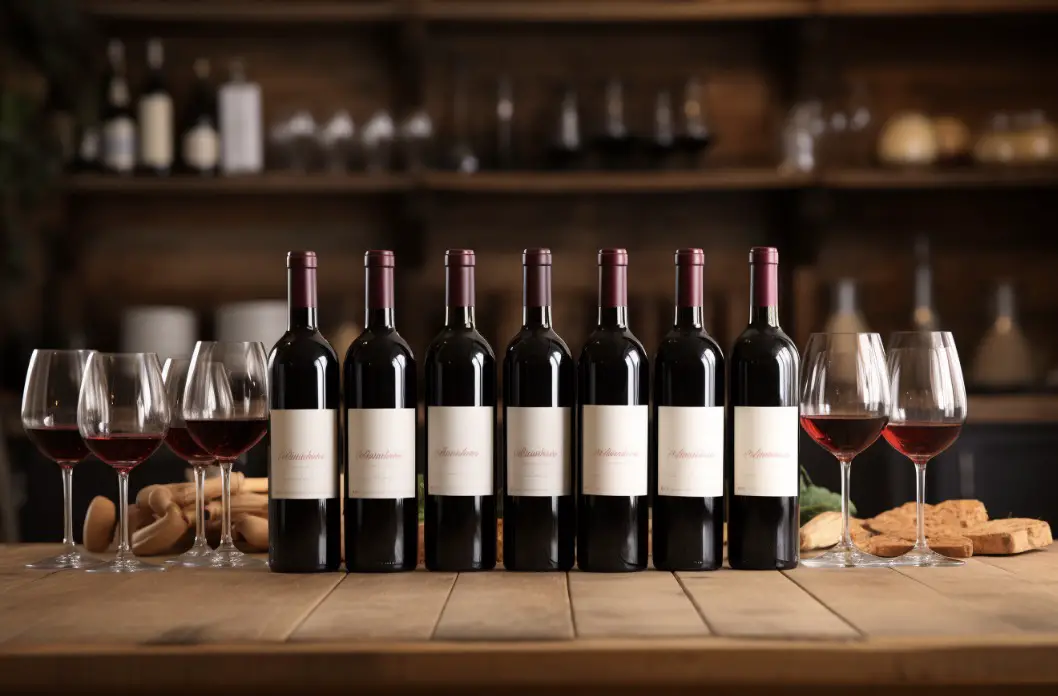When it comes to the art of winemaking, there are many steps and techniques that are often debated among vintners. One of these is the process of secondary fermentation. Is secondary fermentation necessary for wine?
Well, it depends. Not all wines require secondary fermentation, but it can be a crucial step for certain styles and can greatly enhance the complexity and depth of your final product.
It’s not a one-size-fits-all answer, but rather depends on the type of wine being produced, your personal winemaking style, and the specific characteristics you want to bring out in your wine.
Understanding Fermentation
Before we delve deeper into secondary fermentation, let’s first understand the basics of fermentation. Fermentation is the process by which yeast converts sugars into alcohol and carbon dioxide.
This is the fundamental step that turns grape juice into wine. It’s during this process that the unique flavors, aromas, and characteristics of the wine start to develop. Every wine goes through a primary fermentation, but not all wines undergo a secondary fermentation.
Primary Fermentation
Primary fermentation is the first stage of the fermentation process. This is when the majority of the sugar in the grape juice is converted to alcohol.

The yeast consumes the sugars, producing alcohol, heat, and carbon dioxide. This stage usually lasts for about one to two weeks and is done in a large fermentation vessel.
It’s during this primary fermentation that the basic profile of the wine is formed. The type of grapes used, the yeast strain selected, and the fermentation temperature all have a significant impact on the flavor, aroma, and body of the wine.
Secondary Fermentation: What and Why?
Secondary fermentation, also known as malolactic fermentation (MLF), is a process where lactic acid bacteria, usually Oenococcus oeni, converts malic acid in the wine to lactic acid and carbon dioxide. This process typically follows primary fermentation and can last for several weeks to several months.

The purpose of secondary fermentation is to reduce the acidity and enhance the complexity of the wine. Wines that undergo secondary fermentation tend to have a rounder, fuller mouthfeel and can exhibit buttery or creamy notes. Many red wines and some fuller-bodied white wines, like Chardonnay, typically undergo secondary fermentation.
Malolactic Fermentation
Malolactic fermentation (MLF) is the technical term for secondary fermentation. Despite its name, it’s not actually a fermentation process in the strictest sense, but rather a bacterial conversion.
The lactic acid bacteria converts the sharper malic acid into softer lactic acid, reducing the overall acidity of the wine and contributing to a smoother mouthfeel.
MLF is particularly beneficial for wines with high malic acid content, such as those made from grapes grown in cooler climates. The process can also help stabilize the wine by removing compounds that could potentially spoil the wine in the bottle.
Deciding Whether to Use Secondary Fermentation
The decision to use secondary fermentation largely depends on the style of wine you’re making and the characteristics you want in your final product.
For lighter, fruit-forward wines like Sauvignon Blanc or Pinot Grigio, secondary fermentation may not be necessary or desired.
These wines typically benefit from retaining their fresh, crisp acidity, which can be lost during secondary fermentation.

Wines that benefit from secondary fermentation:
1. Sparkling wines: The secondary fermentation often takes place in the wine bottle that the wine will be sold in, and is known as the “méthode champenoise” or “Champagne method” after the region most noted for sparkling wine production.
This secondary fermentation, also known as bottle fermentation, is the process that makes the wine “bubbly” due to the containment of carbon dioxide, which is normally released as a by-product in regular fermentation.
Red wines: In still wine production, particularly of red wines, the secondary fermentation process can also usher in the use of malolactic fermentation (or MLF) where the hard, green apple-like malic acid is converted into softer, butter-like lactic acid.
3. Some white wines: Some white wines like Chardonnay can also benefit from secondary fermentation through the use of malolactic fermentation (or MLF).
Wines that do not benefit from secondary fermentation: White wines with fruity and floral character and crisp acidity: White wines that have a flavor profile based on lots of fruity and floral character and crisp acidity have little to gain from malolactic fermentation. These include wines such as Riesling, Gewürztraminer, Pinot Gris, Sauvignon Blanc, and Muscat.
On the other hand, fuller-bodied wines like Cabernet Sauvignon or Chardonnay can greatly benefit from the added complexity and smoother mouthfeel secondary fermentation provides.
Risks and Rewards of Secondary Fermentation
Like any winemaking technique, secondary fermentation comes with both risks and rewards.
The rewards include reduced acidity, increased complexity, and a more balanced, rounded wine. Secondary fermentation can also help to stabilize the wine, reducing the risk of spoilage in the bottle.
However, there are also risks. Secondary fermentation can potentially lead to off-flavors if not carefully managed. It also requires careful monitoring and control of temperature and pH levels, adding to the complexity of the winemaking process.
Conclusion
So, is secondary fermentation necessary for wine?
While it’s not an absolute requirement, secondary fermentation can greatly enhance the quality and complexity of certain styles of wine. It’s a tool in the winemaker’s arsenal that, when used appropriately and skillfully, can elevate your wine to new heights.
Remember, winemaking is as much an art as it is a science, and the best wines often come from a blend of knowledge, experience, and a touch of intuition.
Listicle: 10 Fast Facts about Secondary Fermentation
1. Secondary fermentation is also known as malolactic fermentation (MLF).
2. It’s not a true fermentation process but a bacterial conversion.
3. During secondary fermentation, malic acid is converted into lactic acid.
4. Secondary fermentation reduces the overall acidity of the wine.
5. Wines that undergo secondary fermentation often have a rounder, fuller mouthfeel.
6. Many red wines and some full-bodied white wines, like Chardonnay, undergo secondary fermentation.
7. Secondary fermentation can enhance the complexity of the wine.
8. It can also help stabilize the wine, reducing the risk of spoilage.
9. Secondary fermentation can potentially lead to off-flavors if not carefully managed.
10. The decision to use secondary fermentation depends on the style of wine being made and the winemaker’s personal preferences.
FAQs
What happens if you drink homemade wine too early?
If you drink homemade wine too early, it may not have fully developed its flavors and aromas. The wine might taste harsh, acidic, or unbalanced, lacking the complexity that comes with aging. It’s important to allow the wine to mature and settle, so it can reach its optimal taste and quality.
What is the point of secondary fermentation wine?
The point of secondary fermentation in wine is to enhance its flavor, complexity, and overall quality. This process, also known as malolactic fermentation, involves the conversion of malic acid into lactic acid by bacteria. This reduces the wine’s acidity and imparts a smoother, rounder mouthfeel. Additionally, secondary fermentation can contribute to the development of desirable flavors and aromas, such as buttery or creamy notes in certain styles of wine.
How do you know if primary fermentation is done with wine?
Primary fermentation is typically considered complete when the specific gravity of the wine stabilizes at or near 1.000. This can be determined by using a hydrometer to measure the density of the wine before and after fermentation. If the specific gravity remains constant for several consecutive days, it indicates that the yeast has consumed all available sugars and fermentation is finished. Additionally, the absence of active bubbling in the airlock and the clearing of the wine can also indicate the completion of primary fermentation.
Why is my wine still fermenting after 3 weeks?
There could be a few reasons why your wine is still fermenting after 3 weeks. One possibility is that the fermentation process is taking longer than expected due to cooler temperatures or a slower yeast activity. Another reason could be an incomplete fermentation caused by insufficient yeast or nutrients, or an imbalance in the sugar and acidity levels. Additionally, certain wine styles, such as high-alcohol or sweet wines, may have longer fermentation times. It is important to monitor the specific gravity and taste the wine to determine if fermentation is truly ongoing or if there are other factors at play.
Can you drink wine during primary fermentation?
No, it is not recommended to drink wine during primary fermentation. Primary fermentation is the stage when yeast converts sugar into alcohol, and the wine is still actively fermenting. Drinking the wine at this stage may result in an unpleasant taste due to the presence of residual sugars, yeast, and other fermentation byproducts. It is best to wait until the fermentation is complete and the wine has undergone clarification and aging processes before consuming it.
Can you primary ferment wine too long?
Yes, it is possible to primary ferment wine for too long. The primary fermentation is the initial stage where yeast converts sugar into alcohol. If left for an extended period, the yeast can consume all the available sugar, leading to a dry and potentially unbalanced wine. Additionally, prolonged contact with the yeast can result in off-flavors and aromas. Therefore, it is important to monitor the fermentation process and proceed to secondary fermentation or bottling in a timely manner.




